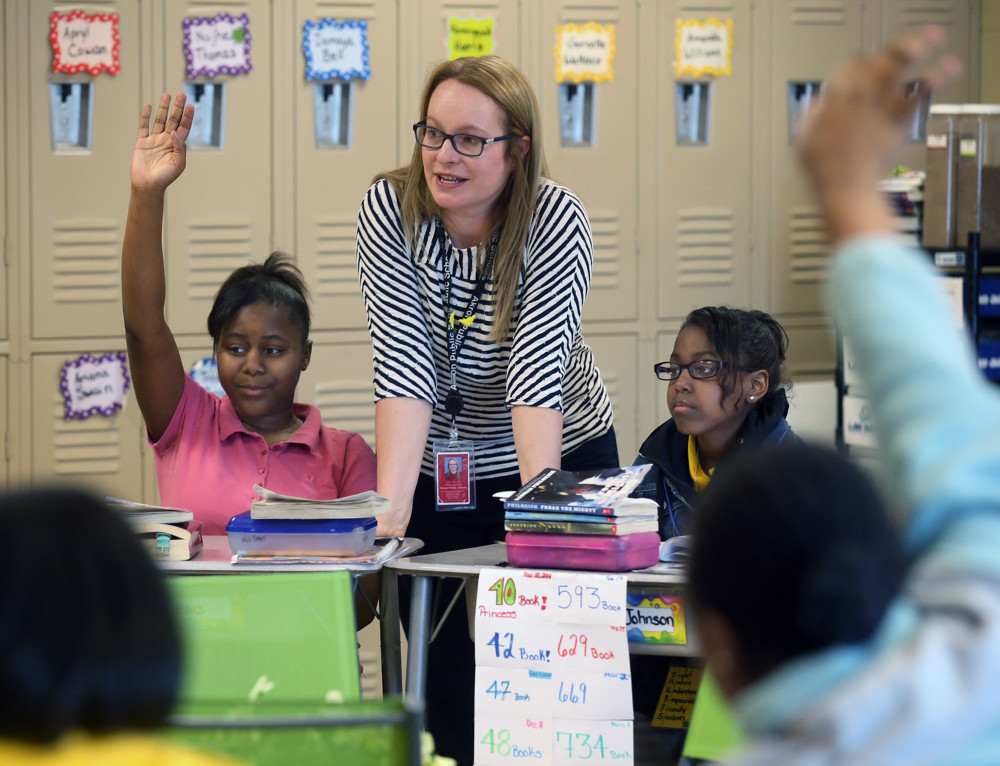By Christina Veiga
The Miami Herald
WWR Article Summary (tl;dr) In an effort to help more women break through gender barriers in the often male-dominated world of STEM (Science, Technology, Engineering and Math), a group of young women from across Miami-Dade are getting a hands-on introduction to these careers from Columbia University’s highly-competitive Girls in STEM program.
The Miami Herald
Yoldine Nicoleau stuffed a strawberry into a ziplock bag and smashed it to a pulp.
As about 20 other girls joined in, the science lab quickly filled with the sweet smell of fresh fruit and the sound of fists pounding on tables.
This is what it takes to extract DNA from grocery store items. It’s also what getting girls interested in science looks, smells and sounds like.
“This is fun for me,” said Nicoleau, a rising junior at Miami-Dade’s School for Advanced Studies. “I feel comfortable. I enjoy it. I’m around people who understand me.”
For a week this summer, a group of young women from across Miami-Dade County got a hands-on introduction to working in STEM — Science, Technology, Engineering and Math. They were all selected for Columbia University’s highly-competitive Girls in STEM program.
The goal: To help more women break through gender barriers in the often male-dominated world of STEM.
While women make up 47 percent of the workforce, according to Bureau of Labor Statistics, they are sorely underrepresented in fields such as computer science, engineering and physics. For example, only 7 percent of mechanical engineers are women.
In computer science, it’s only getting worse. The percentage of women earning a bachelor’s degree in the field has decreased by 15 points since the 1980s.
High school girls actually take math and science classes at the same rate as boys — and they score higher grades, according to statistics from the U.S. Department of Education. But barriers such as cultural bias can stand in the way of young girls.
It starts early. By first grade, children associate math more with boys than girls, according to a report by the American Association of University Women.
There are real-world consequences when girls women are missing from the table, said Ranu Jung, interim dean of the College of Engineering and Computer Science at Florida International University.
“There is a diversity of opinions that is important as we find solutions for our problems, and sometimes for everyday life,” she said. “I think a common example that is used is, where do you put your purse when you’re driving your car?”
New this year, Girls in STEM brings Columbia’s renowned high school summer programs to communities beyond the university. It kicked off in only three cities: San Francisco, Miami and New York. Less than 30 high school students were accepted at each site.
“We don’t want girls to be left behind,” said Jason Wingard, dean of Columbia’s School of Professional Studies, which hosts the program.
Wingard helped developed Girls in STEM with feedback from women in Silicon Valley who felt stuck as they tried to climb corporate ladders. For that reason, Columbia’s program includes an emphasis on leadership training, with visits from local women in top business positions.
“It’s always good to see, ‘This is where I can be in 5, 10 years,” said Dia Jones co-site director for the program.
Egypt Noboa is a rising junior at Arthur & Polly Mays Conservatory of the Arts. She learned about Girls in STEM from her math teacher.
“I enjoy math. That makes me one of a kind,” said Noboa, 15.
That was literally the case in her pre-calculus class last year, when Noboa was the only girl — and it will be the case again when she starts calculus this school year. But after attending Columbia’s program and learning from a staff of female teachers, Noboa said she doesn’t feel quite as lonely.
“They’re women who have made it, and I can make it, too,” she said.














































































































































































































































































































































































